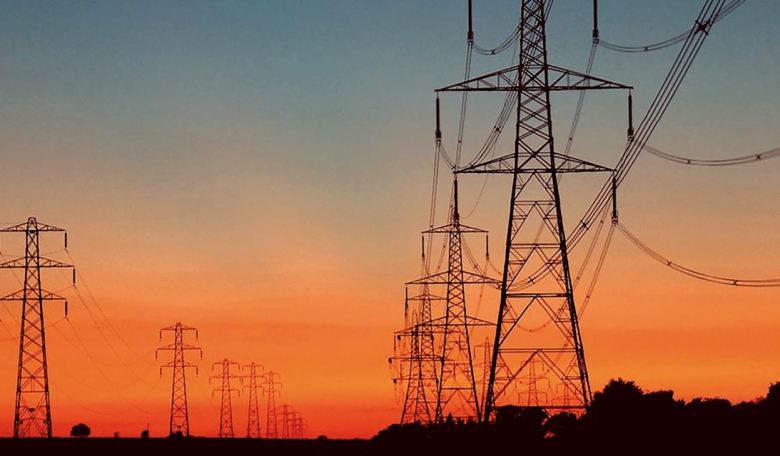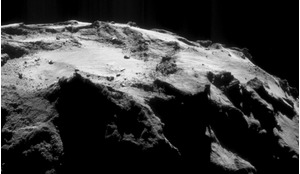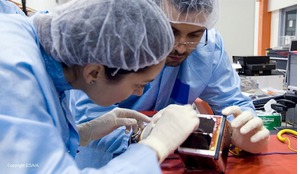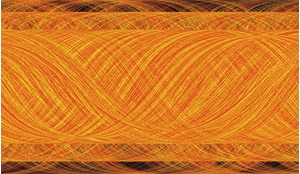It was late summer of 1972. Solar observers, who had diligently counted, drawn and analysed the sunspots of solar cycle 20, noted a precipitous drop in their number. Solar minimum was approaching but for several months a small region of the Sun had pulsed with hints of a new spot group. Delores Knipp recounts the tale of a bad week for both the Sun and Earth.
It was hoped that the mottled spot rounding the solar limb on 30 July 1972 would provide some welcome variety for observers, but there was no way they could detect the tube of intense solar magnetism snaking its way to the surface. By 31 July, the region - newly named McMath Region 11976 - showed signs of magnetic emergence. The growing spot harboured striking magnetic complexity and energy for solar eruptions. Observatories around the world trained telescopes on the region as their staff, perhaps secretly, hoped for something spectacular.
The dog days of summer 1972 saw NASA personnel preparing for the final Apollo mission to the Moon, to be launched in December 1972. At the time, hundreds of spacecraft orbited Earth. Some served military needs and a few provided commercial services. Many had payloads investigating the nature of the near-Earth environment, including two satellites that carried detectors built by the US Navy to view X-ray flares from the solar atmosphere, a new research satellite to observe gamma rays and other spacecraft with rudimentary solar wind detectors.
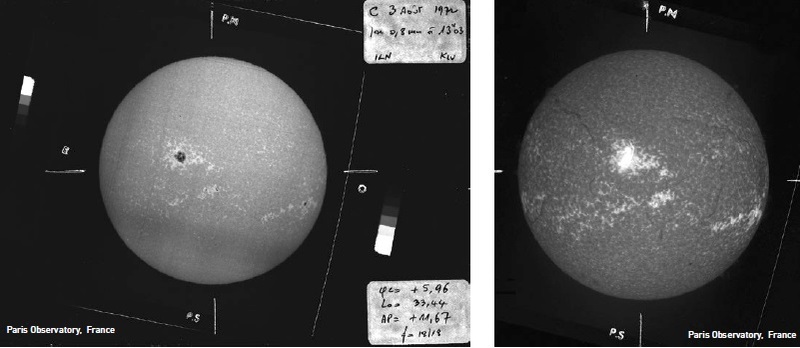 A vew of McMath Region 11976 from the Paris Observatory early on 4 August 1972. The left image in ultraviolet light highlights the dark sunspot and surrounding hot plasma. The right image in visible light shows the flare in progress. The features move from left to right as the Sun rotates.
A vew of McMath Region 11976 from the Paris Observatory early on 4 August 1972. The left image in ultraviolet light highlights the dark sunspot and surrounding hot plasma. The right image in visible light shows the flare in progress. The features move from left to right as the Sun rotates.
Solar cannonballs
Forecasters, seeing the classic magnetic ‘delta’ spot configuration, knew that an intense interval of solar activity was likely
Then, on 2 August, the Sun flared twice as deep-rooted magnetic fields pushed through the solar surface. Some of the energy registered as white light flares, a form of extreme flaring first observed by Richard Carrington and Richard Hodgson in 1859 during the Carrington Event. Forecasters, seeing the classic magnetic ‘delta’ spot configuration, knew that an intense interval of solar activity was likely.
However, they could not know that associated with the flares were two ‘plasma cannonballs’ (now known as coronal mass ejections or CMEs) were aimed at Earth.
The CMEs arrived at Earth in tandem early on 4 August. Travelling through interplanetary space, they cleared the path for any subsequent ejecta along the Sun-Earth line. In their wake, they left a tenuous trail of energised protons - fodder for one of the largest solar energetic particle (SEP) events of the Space Age. Data from space-based measurements suggest that one or both of the ejecta brought a plug of solar atmosphere to the magnetic field surrounding Earth. Over several hours this material was mixed into Earth’s magnetosphere and the stage was set for one of the most extraordinary solar geospace events ever experienced in the Space Age.
Early on 4 August, the Sun, unable to contain the sub-surface rush of magnetism, convulsed. Just before 0630 UT, ground-based solar radio monitors saw readings go off the charts and the first ever recorded gamma-ray flare photons were detected. Within a few minutes, in-orbit X-ray sensors saturated and military radio communications blacked out. Lacking today’s sensors, no one knew of the ultra-fast CME blasting through the solar atmosphere toward Earth. It would set a record, still held, for the fastest CME transit time to Earth - only 14.6 hours.
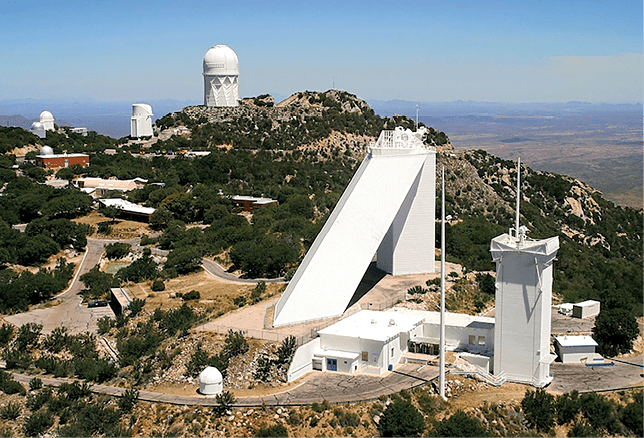 The towering trianglular shape of the McMath-Pierce solar telescope at Kitt Peak, Arizona, USA.
The towering trianglular shape of the McMath-Pierce solar telescope at Kitt Peak, Arizona, USA.
Hints of rogue structures in interplanetary space came quickly as spacecraft reported increased energetic particle fluxes. Earth’s magnetically-open polar regions felt the initial impacts as energetic particles enhanced ionisation and stifled high frequency radio communications. Within two hours, natural cosmic radio signals used to monitor the state of the dense polar ionosphere could no longer penetrate it. Meanwhile, the original flare was still in progress, emitting sufficient X-rays to keep day-side High Frequency (HF) radio signals blocked.
Ground-based monitors revealed that other cosmic messengers (galactic cosmic rays) were not arriving as expected and observers realised that a very large interplanetary structure capable of deflecting them was on the loose and likely headed for Earth. We now know that this structure was accelerating ions from the wake of the previous CMEs. The accelerating particles were scattering between the converging solar wind structures, gaining energy with each bounce.. An interplanetary game of particle ping-pong drove SEPs into Earth’s high-latitude atmosphere, creating nuclear interactions whose by-products were measured at the ground as a so-called ground level event. Energetic particles pummelled Earth’s polar ozone layer and spacecraft solar panels alike, and human intervention was required to keep the space-based Vela nuclear test-ban detectors on task.
Even as observers and forecasters waited for a new magnetic onslaught, remnants of the previous CMEs were still interacting with the space surrounding Earth. The magnetosphere filled with unusually dense plasma and models now show that such a state tends to mask the usual signals of a strong magnetic storm. The ultra-fast CME hurtled towards Earth, as its associated flare emissions slowly decayed, but Earth’s upper atmosphere remained highly ionised with flare-induced plasma drifting toward the nightside.
Just before 2100 UT, Earth’s magnetic field endured the first impulse of a solar wind shock arriving well ahead of the ultra-fast CME. Dayside magnetic measurements at the ground went off-scale. Shortly after, a spectacular aurora, bright enough to cast shadows, appeared along the southern coast of Britain. Spacecraft in geostationary orbit effectively became solar wind detectors as Earth’s magnetic shield buckled under the extreme solar wind pressure.
Lacking today’s sensors, no one knew of the ultra-fast CME blasting through the solar atmosphere toward Earth
Then, at about 2238 UT, another extraordinary solar wind magnetic impulse hit Earth. This second structure, crunched between the leading shock and the CME still-to-arrive, packed an extraordinary punch. Currents coupling the magnetosphere to Earth’s high latitude regions surged, inducing currents in long conductors at Earth’s surface. Power grids extending from northwestern Canada to the US Midwest and East Coast dealt with oscillating voltages and amplified currents. Currents in AT&T’s mid-continent L4 communications cable exceeded threshold. Fortunately, most of the power grid impacts on this warm August night were limited to the northern US states and Canada, where power loads were not particularly heavy, although strong-to-moderate effects (apparently mitigated by grid operators) were reported in the central US.
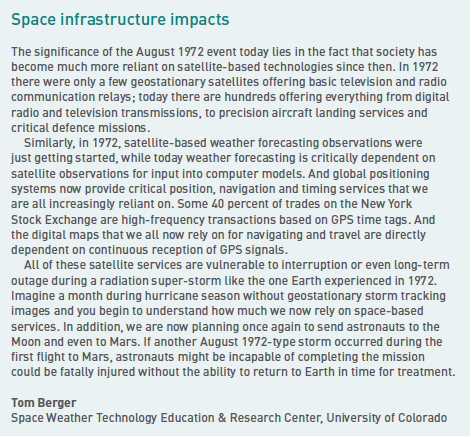
On the other side of the world, US Navy aircraft were making an early morning survey of the naval minefields that had been established around North Vietnamese harbours. These minefields were part of an effort to stem the flow of war materials and bring the US Vietnam War to a close. Suddenly, explosions! According to US Navy records, aerial surveyors reported that more than two dozen mines detonated within a 30 second period. Exhaustive investigations by the US Navy revealed that a subset of the magnetically sensitive mines tripped as the magnetic impulses swept over the minefield. Further US Naval aerial surveys showed numerous additional mud pits indicative of mine detonation, and the service worked feverishly to replace the detonated mines, maintaining the harbour blockades with more robust technology.
Only after the chaos of the first two shocks and magnetic impulses did the CME-proper arrive. The record of its arrival is muddled. By that time some monitoring systems were compromised or had failed.
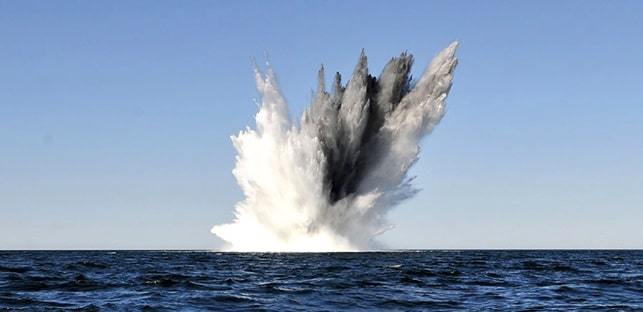 More than two dozen US Navy mines detonated within a 30 second period after magnetically sensitive mines in Vietnam Haiphong harbour tripped when a magnetic impulse swept over the minefield.
More than two dozen US Navy mines detonated within a 30 second period after magnetically sensitive mines in Vietnam Haiphong harbour tripped when a magnetic impulse swept over the minefield.
Aftermath
In the hours, days and weeks that followed this extraordinary event, both natural and human-made systems dealt with the impacts.
After the second solar wind impulse, radio propagation disturbances spread to Earth’s nightside and, for hours, Earth’s geomagnetic field ‘rang’ with giant pulsations. Meanwhile the atmosphere was in upheaval. Estimates, based on changes in satellite orbits, indicated 500-800 percent increases of air density in the 300-1000 km low Earth orbit altitude range altitude range. For days, monitors in Earth’s inner radiation belts recorded the presence of energetic ions heavier than hydrogen, a clear indication that the unusual solar wind had penetrated deep into Earth’s domain. Earth’s polar ozone layer remained disturbed for almost two months.
The technology impacts may never be fully counted. Individual power companies did not make broad public announcements of power grid issues, as it was the norm to repair and move on. Attribution of a US Department of Defense (DoD) spacecraft failure came months later; the result: harden, redesign and move on. AT&T redesigned its L4 cable system to keep geomagnetically induced currents at bay. Industry learned and moved on.
NASA convened a workshop to decide how to deal with the planned Apollo 17 Moon mission, should McMath Region 11976 reappear, and, although it did not, the event became a benchmark for astronaut radiation safety.
The effects of this storm have been reported in the scientific literature over the past four decades. In particular, the US National Oceanic and Atmospheric Administration (NOAA) supported a significant data consolidation and interpretation effort in 1972-1973. However, some observations belonging to different teams and countries only became available years after the initial excitement about the storm had dampened, while impacts on US DoD assets were not publicly released until years after the fact. Many individual and team-studies have investigated this event, but tying scientific observations to verified impacts has been a challenge.
Certainly, the potential radiation impact on astronauts was and is one of the most publicised aspects of the storm; thankfully, there were no astronauts on their way to the Moon at the time. So, today the internet lights up with space radiation discussions each time a space weather forecasting agency gives notice of a major solar eruption. Researchers for all space-faring nations and NASA’s Space Radiation Analysis Group take solar storm warnings very seriously.
Space weather efforts by the United Nations, the US and the UK have each called for a benchmarking process. Researchers and historians in the relatively young science of space weather are just now combing through records to understand the size, impacts and frequency of space weather storms.
Lessons learned
It is not clear that Earth and its technology-dependent societies are fully prepared for another ultra-fast CME
New instruments, ground- and space-based, are providing valuable insights into sub-surface solar structures and their associated seismic signatures, which can be traced even while the structures are on the far side of the Sun. When these structures present themselves as ‘delta’ sunspots observers pay keen attention, because they know their strong, repetitive eruptions from such regions can send a series of path-clearing CMEs into space. Multi-eruptive events do more than clear paths: they also support converging interplanetary magnetic structures, the perfect set-up for enhanced SEP space radiation events. On-orbit coronagraphs allow forecasters to see most of the large, fast CMEs billowing into space and include their signatures and vital statistics in forecast models.
Equally important is a new recognition that not all great storms will look like a Carrington Event. Some storms are much more ‘geoeffective’ than others because the magnetic field transported to Earth in the CME has a specific orientation. If the embedded CME field is opposite to Earth’s dipole, the geo-effects can be huge, especially for fast CMEs. The August 1972 event was ultra-fast, but contained an initial magnetic field that was mostly parallel to Earth’s field. A parallel component tends to wrap the CME field around the Earth like a protective cocoon.
In the early storm stage, the August 1972 CME field was anti-aligned for only short periods of time. These short intervals coincided with the AT&T L4 outage, the power grid instabilities in North America and (probably) the sea mine explosions in Southeast Asia. Before and after these episodic events, the cocooning allowed the dense solar wind to settle into Earth’s geospace. New modelling suggests that such effects muffle the expected magnetic signatures of an intense storm while still allowing energy into Earth’s high latitudes to be more slowly redistributed. We are left to contemplate the effects of a similar event with a leading magnetic field anti-aligned for a long interval. It seems safe to say that the resulting geomagnetic storm would have been devastating to more than sea mines.
We have an armada of ground-based and space-based systems monitoring the Sun and its atmosphere, but it is not clear that Earth and its technology-dependent societies are fully prepared for another ultra-fast CME. Our single operational solar wind monitor, DSCOVR (the Deep Space Climate Observatory), sits 1.5 million km upstream from Earth. The August 1972 shock and CME would have roared past that spot reaching Earth in under 10 minutes. Even assuming that all systems on DSCOVR continued to function in such a brutal solar wind and radiation environment, would it be possible today to effectively warn those who need to act to protect important military and civil assets? And, if so-warned, could effective actions be taken in such a short time?
Knowing the impacts of the 4 August 1972 event, it is important to have a collective, worldwide effort in a number of areas:
- better monitoring of space weather at the Sun and near Earth
- advancing models that support exploration of the full range of space weather storms and their potential impacts
- improving critical infrastructure security
- helping citizens understand the importance of investing in forecasting and mitigation of effects that are largely unseen and rarely occur, but whose effects could cripple society.
Dozens of large flares and at least four CMEs impacted Earth within a six-day span during the first week of August 1972. The associated space radiation storms set records and the geomagnetic impulse drove amazing responses. Understanding and modelling the sequence of events is the first step to preparing for other Carrington-class storms and, if reliable observations can be maintained, reliable forecasting is on the horizon. This should be a global priority.
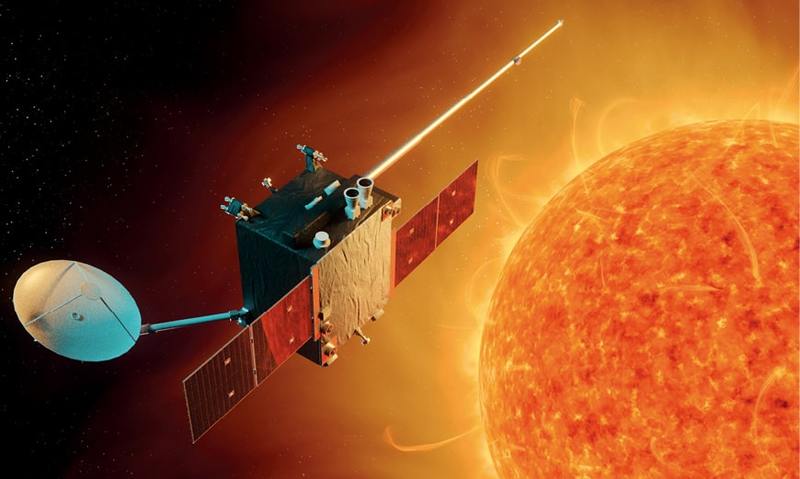 To ensure a robust capability to monitor, nowcast and forecast potentially dangerous solar events, ESA has initiated the assessment of two possible future space weather missions, positioning spacecraft in orbit at the Sun-Earth L1 and L5 Lagrange points.
To ensure a robust capability to monitor, nowcast and forecast potentially dangerous solar events, ESA has initiated the assessment of two possible future space weather missions, positioning spacecraft in orbit at the Sun-Earth L1 and L5 Lagrange points.
About the author
Dr Delores Knipp is a Research Professor at University of Colorado (CU), Boulder and at CU’s Space Weather Technology, Education & Research Center, and a Senior Research Associate at the US National Center for Atmospheric Research’s High Altitude Observatory. Her research efforts focus on weather at the space-atmosphere interface. She promotes scientific use of civil, military and commercial space environment observations. She is a retired US Air Force Officer, a Fellow of the American Meteorological Society and Editor-in-Chief of American Geophysical Union’s Space Weather Journal. Dr Knipp earned her PhD at the University of California, Los Angeles.





